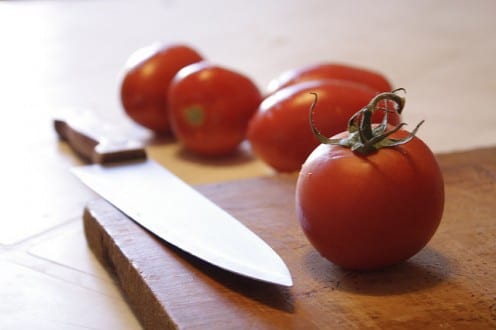How to gut and prepare a QQ/Facebook profile
By Daniel Miller, on 29 October 2013

Photo by Iñigo Cañedo (Creative Commons)
‘How to gut and prepare a QQ/Facebook Profile’
By Chef Daniele Milieu(This is a version of an old Breton recipe I learnt from my grandmother.)
First catch your QQ/Facebook profile.
I will assume that you have all already landed some nice fresh fat profiles to work with.
The Equipment:
The specific tool I have used for this work is called Evernote. There is a premium paid for version, but as a cheapskate I used the free download, until that was full (now I pay for it). Once it is downloaded then when you go on to Facebook/QQ and use the ‘add to evernote’ function to select images and/or text. I tag them with details of the informant and with keywords.
Thus began a several page case-study in how to analyse postings. This was sent to the team a month back as the start to a group discussion about methodology. The reason was as follows. As a nine-site comparative project we are trying to undertake much of our work in a coordinated fashion. So for most of the time fieldworkers are concentrating on the same topic across the various sites. The plan this month has been to work on the analysis of what we can see online. Which is why we needed an agreed methodology. Obviously for a study of social media we need to engage with the actual things that people post. As qualitative rather than quantitative workers the public are often highly suspicious of our findings as ‘unscientific’ While we may not count many things we often do choose to be quite systematic. We are clear that we don’t just want to give impressionist accounts, that claim our informants post mostly jokes or pose with cars. We want to ensure that we carefully determine what they do post and not just what we think they are posting. So what followed in these ‘gutting’ instructions was several pages about how to work on the last 20 posts of each profile, and how to ‘sample’ photographic materials so that we felt comfortable that we were dealing with what they actually favour and not our guess work. These methods were further developed in conversations around the team. They raised many issues? For example it would be good to know the language terms they use in describing their friends postings, but how can we record this so as to see which postings they are describing at the time?
One might think that analysing online content is something we could do once we go home. It’s a waste of valuable ethnographic time to do this while we are still in the field. But our reasoning is that looking systematically at actual posting will lead to further questions that we will want to discuss directly with the informants themselves. So this seems a sensible thing to do as we move towards our half-way mark of fieldwork. It’s too late to gain these insights once we have finished. We need to look closely and carefully at actual postings now, so that we are forced into a more honest acknowledgment of their content and can use these to engage in further and hopefully deeper discussions with our informants. At present I have worked on a selection of profiles from The Glades and also from our Trinidad fieldwork. The differences are highly instructive and seem to reinforce our hope that material posted online can complement traditional ethnography as means of trying to characterise comparative society and the values and forms that we try to account for in our analysis.
One Response to “How to gut and prepare a QQ/Facebook profile”
- 1
 Close
Close





RT @UCLSocNet: Prof Daniel Miller writes about analysing online social media while in the field http://t.co/XL5qWN8FGr